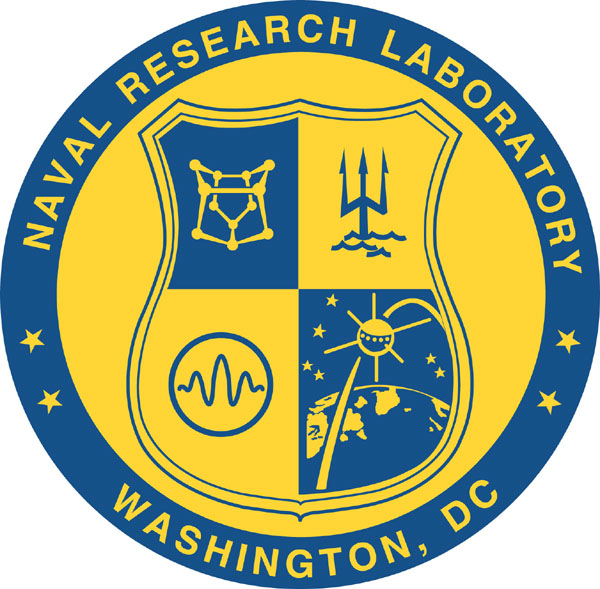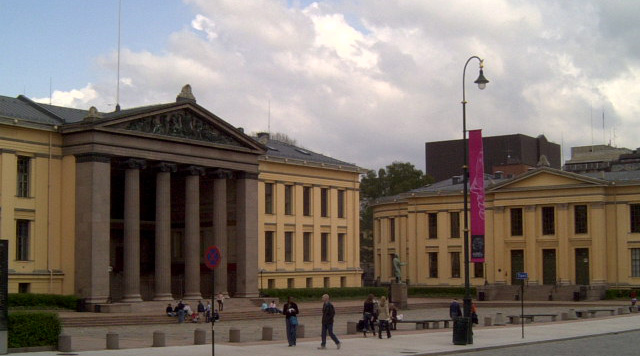|
Kathleen Crane
Kathleen (Kathy) Crane (born 1951) is an American marine geologist, best known for her contributions to the discovery of hydrothermal vents on the Galápagos Rift along the East Pacific Rise in the mid-1970s. Education Crane received a Bachelors of Arts in Geology, with a minor in German, from Oregon State University in 1973. In 1977, she received a doctorate from Scripps Institution of Oceanography with a dissertation entitled "Hydrothermal Activity and Near Axis Structure at Mid-Ocean Spreading Centers". From 1977-1979, she studied mid-ocean ridges as a postdoctoral fellow with Robert (Bob) Ballard at the Woods Hole Oceanographic Institution. Discovery of hydrothermal vents In June 1976, on the ''Pleiades II'' expedition on the R/V Melville to the Galápagos Rift, Crane detected a 0.1 °C anomaly using a temperature-monitoring system she had developed for the Deep-Tow seafloor imaging system run by Fred Noel Spiess of the Marine Physical Laboratory at Scripps Ins ... [...More Info...] [...Related Items...] OR: [Wikipedia] [Google] [Baidu] |
Geology
Geology () is a branch of natural science concerned with Earth and other astronomical objects, the features or rocks of which it is composed, and the processes by which they change over time. Modern geology significantly overlaps all other Earth sciences, including hydrology, and so is treated as one major aspect of integrated Earth system science and planetary science. Geology describes the structure of the Earth on and beneath its surface, and the processes that have shaped that structure. It also provides tools to determine the relative and absolute ages of rocks found in a given location, and also to describe the histories of those rocks. By combining these tools, geologists are able to chronicle the geological history of the Earth as a whole, and also to demonstrate the age of the Earth. Geology provides the primary evidence for plate tectonics, the evolutionary history of life, and the Earth's past climates. Geologists broadly study the properties and processes of E ... [...More Info...] [...Related Items...] OR: [Wikipedia] [Google] [Baidu] |
Chemosynthesis
In biochemistry, chemosynthesis is the biological conversion of one or more carbon-containing molecules (usually carbon dioxide or methane) and nutrients into organic matter using the oxidation of inorganic compounds (e.g., hydrogen gas, hydrogen sulfide) or ferrous ions as a source of energy, rather than sunlight, as in photosynthesis. Chemoautotrophs, organisms that obtain carbon from carbon dioxide through chemosynthesis, are phylogenetically diverse. Groups that include conspicuous or biogeochemically-important taxa include the sulfur-oxidizing Gammaproteobacteria, the Campylobacterota, the Aquificota, the methanogenic archaea, and the neutrophilic iron-oxidizing bacteria. Many microorganisms in dark regions of the oceans use chemosynthesis to produce biomass from single-carbon molecules. Two categories can be distinguished. In the rare sites where hydrogen molecules (H2) are available, the energy available from the reaction between CO2 and H2 (leading to production of m ... [...More Info...] [...Related Items...] OR: [Wikipedia] [Google] [Baidu] |
Arctic Environmental Atlas
The Arctic ( or ) is a polar region located at the northernmost part of Earth. The Arctic consists of the Arctic Ocean, adjacent seas, and parts of Canada (Yukon, Northwest Territories, Nunavut), Danish Realm (Greenland), Finland, Iceland, Norway, Russia (Murmansk, Siberia, Nenets Okrug, Novaya Zemlya), Sweden and the United States (Alaska). Land within the Arctic region has seasonally varying snow and ice cover, with predominantly treeless permafrost (permanently frozen underground ice) containing tundra. Arctic seas contain seasonal sea ice in many places. The Arctic region is a unique area among Earth's ecosystems. The cultures in the region and the Arctic indigenous peoples have adapted to its cold and extreme conditions. Life in the Arctic includes zooplankton and phytoplankton, fish and marine mammals, birds, land animals, plants and human societies. Arctic land is bordered by the subarctic. Definition and etymology The word Arctic comes from the Greek word (''arkt ... [...More Info...] [...Related Items...] OR: [Wikipedia] [Google] [Baidu] |
United States Naval Research Laboratory
The United States Naval Research Laboratory (NRL) is the corporate research laboratory for the United States Navy and the United States Marine Corps. It was founded in 1923 and conducts basic scientific research, applied research, technological development and prototyping. The laboratory's specialties include plasma physics, space physics, materials science, and tactical electronic warfare. NRL is one of the first US government scientific R&D laboratories, having opened in 1923 at the instigation of Thomas Edison, and is currently under the Office of Naval Research. As of 2016, NRL was a United States Navy Working Capital Fund, Navy Working Capital Fund activity, which means it is not a line-item in the US Federal Budget. Instead of direct funding from Congress, all costs, including overhead, were recovered through sponsor-funded research projects. NRL's research expenditures were approximately $1 billion per year. Research The Naval Research Laboratory conducts a wide v ... [...More Info...] [...Related Items...] OR: [Wikipedia] [Google] [Baidu] |
City University Of New York
The City University of New York ( CUNY; , ) is the Public university, public university system of Education in New York City, New York City. It is the largest urban university system in the United States, comprising 25 campuses: eleven Upper division college, senior colleges, seven community colleges and seven professional institutions. While its constituent colleges date back as far as 1847, CUNY was established in 1961. The university enrolls more than 275,000 students, and counts thirteen Nobel Prize winners and twenty-four MacArthur Fellows Program, MacArthur Fellows among its alumni. History Founding In 1960, John R. Everett became the first Chancellor (education), chancellor of the Municipal college, Municipal College System of the City of New York, later renamed CUNY, for a salary of $25,000 ($ in current dollar terms). CUNY was created in 1961, by New York State legislation, signed into law by Governor Nelson Rockefeller. The legislation integrated existing institutions an ... [...More Info...] [...Related Items...] OR: [Wikipedia] [Google] [Baidu] |
Hunter College
Hunter College is a public university in New York City. It is one of the constituent colleges of the City University of New York and offers studies in more than one hundred undergraduate and postgraduate fields across five schools. It also administers Hunter College High School and Hunter College Elementary School. Hunter was founded in 1870 as a women's college; it first admitted male freshmen in 1946. The main campus has been located on Park Avenue since 1873. In 1943, Eleanor Roosevelt dedicated Franklin Delano Roosevelt's and her former townhouse to the college; the building was reopened in 2010 as the Roosevelt House Public Policy Institute at Hunter College. The institution has an 57% undergraduate graduation rate within six years. History Founding Hunter College has its origins in the 19th-century movement for normal school training which swept across the United States. Hunter descends from the Female Normal and High School (later renamed the Normal College of the C ... [...More Info...] [...Related Items...] OR: [Wikipedia] [Google] [Baidu] |
University Of Paris
, image_name = Coat of arms of the University of Paris.svg , image_size = 150px , caption = Coat of Arms , latin_name = Universitas magistrorum et scholarium Parisiensis , motto = ''Hic et ubique terrarum'' (Latin) , mottoeng = Here and anywhere on Earth , established = Founded: c. 1150Suppressed: 1793Faculties reestablished: 1806University reestablished: 1896Divided: 1970 , type = Corporative then public university , city = Paris , country = France , campus = Urban The University of Paris (french: link=no, Université de Paris), metonymically known as the Sorbonne (), was the leading university in Paris, France, active from 1150 to 1970, with the exception between 1793 and 1806 under the French Revolution. Emerging around 1150 as a corporation associated with the cathedral school of Notre Dame de Paris, it was considered the second-oldest university in Europe. Haskins, C. H.: ''The Rise of Universities'', Henry Holt and Company, 1923, p. 292. Officially chartered i ... [...More Info...] [...Related Items...] OR: [Wikipedia] [Google] [Baidu] |
University Of Oslo
The University of Oslo ( no, Universitetet i Oslo; la, Universitas Osloensis) is a public research university located in Oslo, Norway. It is the highest ranked and oldest university in Norway. It is consistently ranked among the top universities in the world and as one of the leading universities of Northern Europe; the Academic Ranking of World Universities ranked it the 58th best university in the world and the third best in the Nordic countries. In 2016, the Times Higher Education World University Rankings listed the university at 63rd, making it the highest ranked Norwegian university. Originally named the Royal Frederick University, the university was established in 1811 as the de facto Norwegian continuation of Denmark-Norway's common university, the University of Copenhagen, with which it shares many traditions. It was named for King Frederick VI of Denmark and Norway, and received its current name in 1939. The university was commonly nicknamed "The Royal Frederick ... [...More Info...] [...Related Items...] OR: [Wikipedia] [Google] [Baidu] |
Fulbright Award
The Fulbright Program, including the Fulbright–Hays Program, is one of several United States Cultural Exchange Programs with the goal of improving intercultural relations, cultural diplomacy, and intercultural competence between the people of the United States and other countries, through the exchange of persons, knowledge, and skills. Via the program, competitively-selected American citizens including students, scholars, teachers, professionals, scientists, and artists may receive scholarships or grants to study, conduct research, teach, or exercise their talents abroad; and citizens of other countries may qualify to do the same in the United States. The program was founded by United States Senator J. William Fulbright in 1946 and is considered to be one of the most widely recognized and prestigious scholarships in the world. The program provides approximately 8,000 grants annually – roughly 1,600 to U.S. students, 1,200 to U.S. scholars, 4,000 to foreign students, 900 to f ... [...More Info...] [...Related Items...] OR: [Wikipedia] [Google] [Baidu] |
Lamont–Doherty Earth Observatory
The Lamont–Doherty Earth Observatory (LDEO) is the scientific research center of the Columbia Climate School, and a unit of The Earth Institute at Columbia University. It focuses on climate and earth sciences and is located on a 189-acre (64 ha) campus in Palisades, New York, north of Manhattan on the Hudson River. History The Lamont–Doherty Earth Observatory (LDEO) was established in 1949 as the Lamont Geological Observatory on the weekend estate of Thomas W. and Florence Haskell Corliss Lamont, which was donated to the university for that purpose. The Observatory's founder and first director was Maurice "Doc" Ewing, a seismologist who is credited with advancing efforts to study the solid Earth, particularly in areas related to using sound waves to image rock and sediments beneath the ocean floor. He was also the first to collect sediment core samples from the bottom of the ocean, a common practice today that helps scientists study changes in the planet's climate and th ... [...More Info...] [...Related Items...] OR: [Wikipedia] [Google] [Baidu] |
Rift Zone
A rift zone is a feature of some volcanoes, especially shield volcanoes, in which a set of linear cracks (or rifts) develops in a volcanic edifice, typically forming into two or three well-defined regions along the flanks of the vent. Believed to be primarily caused by internal and gravitational stresses generated by magma emplacement within and across various regions of the volcano, rift zones allow the intrusion of magmatic dike (geology), dykes into the slopes of the volcano itself. The addition of these magmatic materials usually contributes to the further rifting of the slope, in addition to generating Fissure vent, fissure eruptions from those dykes that reach the surface. It is the grouping of these fissures, and the dykes that feed them, that serves to delineate where and whether a rift zone is to be defined. The accumulated lava of repeated eruptions from rift zones along with the endogenous growth created by magma intrusions causes these volcanoes to have an elongated ... [...More Info...] [...Related Items...] OR: [Wikipedia] [Google] [Baidu] |
Lake Baikal
Lake Baikal (, russian: Oзеро Байкал, Ozero Baykal ); mn, Байгал нуур, Baigal nuur) is a rift lake in Russia. It is situated in southern Siberia, between the federal subjects of Irkutsk Oblast to the northwest and the Republic of Buryatia to the southeast. With of water, Lake Baikal is the world's largest freshwater lake by volume, containing 22–23% of the world's fresh surface water, more than all of the North American Great Lakes combined. It is also the world's deepest lake, with a maximum depth of , and the world's oldest lake, at 25–30 million years. At —slightly larger than Belgium—Lake Baikal is the world's seventh-largest lake by surface area. It is among the world's clearest lakes. Lake Baikal is home to thousands of species of plants and animals, many of them endemic to the region. It is also home to Buryat tribes, who raise goats, camels, cattle, sheep, and horses on the eastern side of the lake, where the mean temperature var ... [...More Info...] [...Related Items...] OR: [Wikipedia] [Google] [Baidu] |







